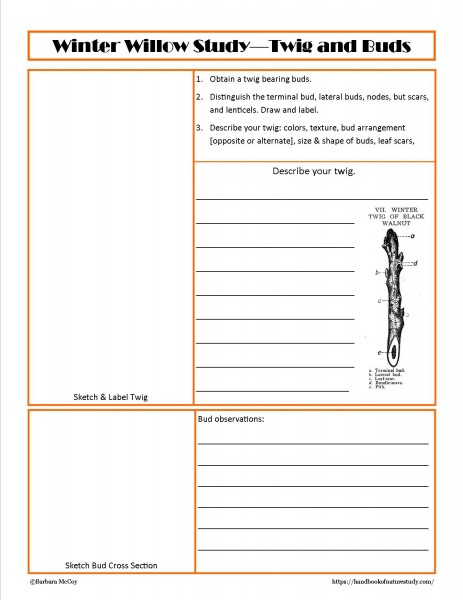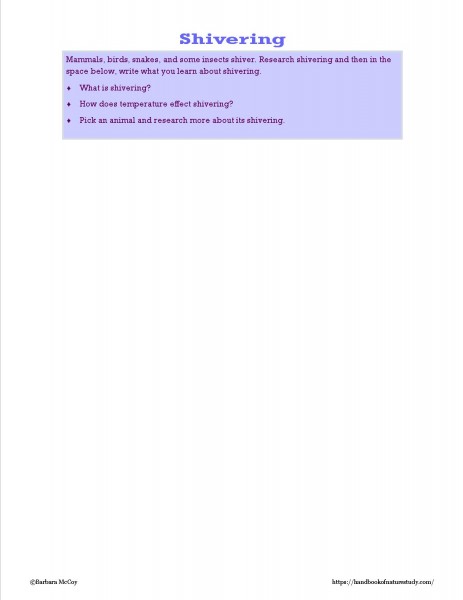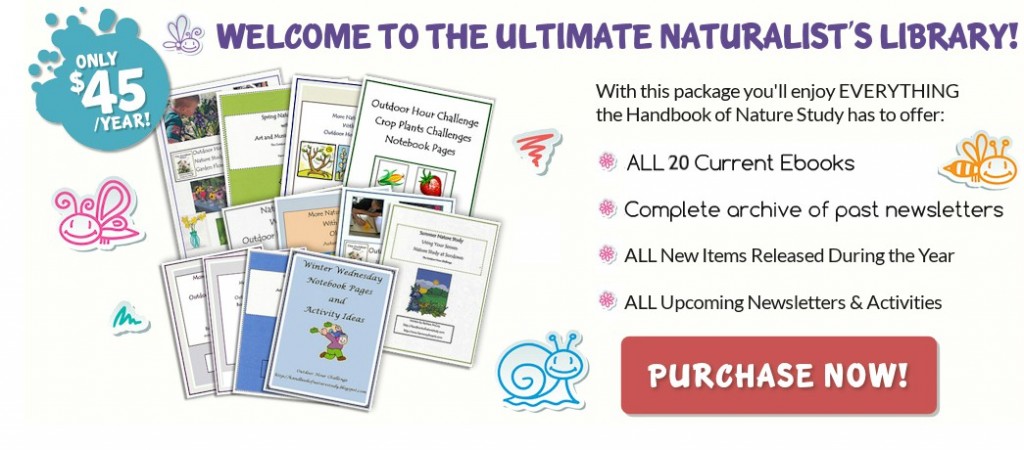Now available in the Ultimate and Journey level memberships:
Bark Patterns * Winter Willow Study * Shivering
I’m excited to share 3 new notebooking pages with members here on the Handbook of Nature Study! These will spice up your January nature study sessions as you look at some winter-related topics.
(See the end of this post for more information on how you can become a member.)



Bark Patterns Notebook Page: With most trees stripped bare of leaves before spring, right now is a great time to get a good look at the wonderful variations of pattern, color and texture that form the trunks and branches of local urban trees. With a little practice, you’ll be able to easily identify many local tree species by name just by looking at their bark. Here is a website you may wish to look at: Tree Bark and Twig Guide.
Winter Willow Study Notebook Page: Twigs and Buds: We will be continuing our seasonal willow study in January and this notebook page is perfect for recording your willow observations! You can see the Autumn Willow Nature Study for more willow study ideas.
Shivering Notebook Page: Have you ever wanted to learn more about why animals shiver? This notebook page will get you started and then give you a place to write down all the interesting things you learn.
Note: If you have any subjects you would like me to create nature notebook pages for, please let me know in a comment here on the blog or in an email: ha*************@***oo.com
Print a complete list of printables available in the Ultimate and Journey level memberships by clicking the button above.
































